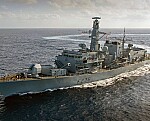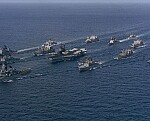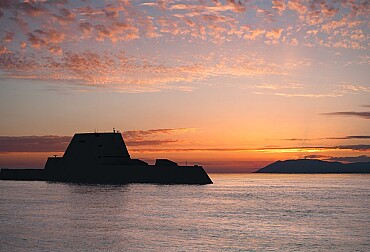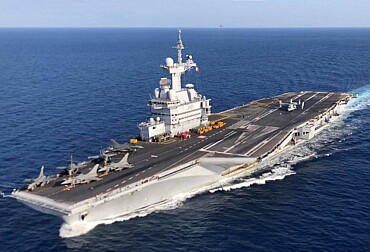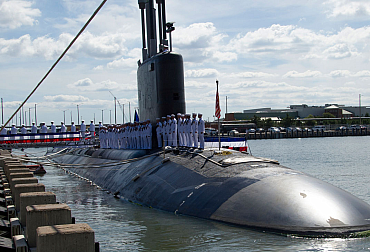Double the power for the French new generation aircraft carrier, the PANG
With a displacement of almost 75,000 tonnes and much greater energy requirements, the future French aircraft carrier will be in a different category to the current Charles de Gaulle.
The aircraft carrier is an all-encompassing military, diplomatic and geopolitical tool. It is above all a tool for operational credibility. Faced with powerful emerging countries such as China and India, which have embarked on programmes involving the construction of several aircraft carriers, abandoning this tool would probably take France out of the restricted circle of major military and diplomatic powers.
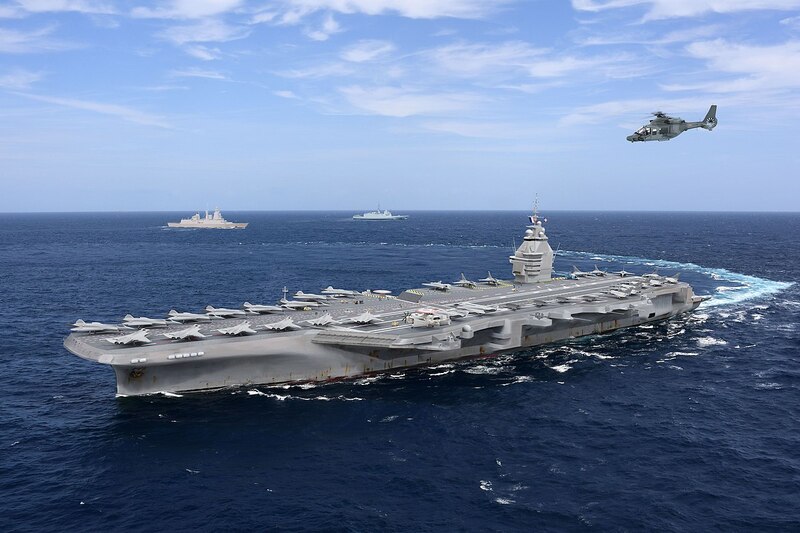
China recently launched two aircraft carriers (similar to the Russian Kuznetsov) and is planning two more. It is interested in electromagnetic catapults and nuclear propulsion. India, which also has an aircraft carrier of Soviet origin (of the STOBAR type, short take-off but arrested recovery), is in the process of building a second one. After a 20-year hiatus, the United Kingdom recently commissioned its two aircraft carriers, HMS Queen Elizabeth and HMS Prince of Wales (STOVL, short take-off and vertical landing). Some countries that only have aircraft carriers are planning to convert them to accommodate the F-35B (with vertical landing). This is the case for the Italian Cavour and the Japanese Izumo aircraft carriers. LHD aircraft carriers are also very popular. Turkey is building its first one, based on the Spanish Navy's Juan Carlos I.
The nuclear-powered carrier plays an essential role in the United States' perception of France. In the hierarchy of nations, the capacity to project power is an essential discriminant, as is the autonomous capacity to assess situations, which not only enables us to have our own intelligence but also to have a say in the exchange of information with our allies and in particular with the "five eyes" (intelligence services of Australia, Canada, New Zealand, the United Kingdom and the United States).
As a symbol of power, an aircraft carrier is by its very nature a symbolic target with high added value, making it a potential target. Everyone remembers the attack on the US destroyer USS Cole in 2000. However, the naval air group is also a highly protected "bubble", difficult to reach by an asymmetrical threat.
Hypervelocity missiles and increasingly stealthy submarines represent a growing threat. China is developing manoeuvrable ballistic missiles described as carrier killers, openly intended to neutralise an American aircraft carrier, as part of a strategy to deny access to the China Sea. Defence systems therefore need to improve at the same pace as targeting systems, and this is one of the challenges facing the upgrading of air defence frigates. The carriers will always be less vulnerable than a land base. Even if defence systems make progress, it will still be much more difficult tactically to hit a naval air group, which is mobile by nature, than a land base.
The United States is currently developing massive aircraft carriers: the USS Gerald Ford class, currently undergoing sea trials, with a mass of 110,000 tonnes and an estimated cost of 13 billion dollars. The programme has given rise to a great deal of controversy across the Atlantic, and it is not certain that the United States will continue with it after delivery of the fourth in the series, scheduled for 2032. A less massive and less costly model of aircraft carrier has been mooted for the future. In addition to the technological complexity of the Ford, which lengthens lead times and increases development and construction costs, fears are emerging about the vulnerability of this type of vessel, at a time when certain powers are developing very long-range precision missiles. The advisability of increasing the number of aircraft carriers of this size is also being questioned. Some observers believe that, in the future, this tool should be used more for air-sea surveillance (at sea) than for power projection (from sea to land), with a shift in the balance between these two functions already apparent.
However, the question is very different for a country with 11 nuclear aircraft carriers with catapults and arresting struts, and for France, which has only one, and would have none left after 2040 if it was not decided to build a successor to the Charles de Gaulle in 2020.
With the arrival of the new-generation aircraft carrier (PANG - porte avions nouvelle génération) in the late 2030s, the French naval aviation industry will undergo a change of scale. The future aircraft carrier will have almost double the weight (75,000 tonnes) of the Charles de Gaulle (41,500 tonnes fully loaded). This mass will have to be mobilised by more powerful machines, capable of supplying the electrical energy needed by ever more power-hungry equipment, in particular the new electromagnetic catapults that will power the future fighter aircraft in the Scaf programme, which will be heavier than the Rafale.
At this stage, the estimated power required is 110,000 hp (80 MW) for propulsion and 30 MW for on-board power. This should be supplied by two K22 nuclear reactors with a thermal output of 220 MW, derived from the K15 fitted to the Charles de Gaulle. These new boilers, designed by Technicatome, will also equip the future SN3G submarines. They will run on low-enriched uranium, which will have to be replaced every ten years.
For the PANG, the power generated will be transmitted to three shaft lines and three propellers (only two on the Charles de Gaulle), via three turbo gearboxes, to enable it to reach a speed of at least 27 knots (50 km/h), which is necessary for aeronautical operations. There are both operational and strategic reasons for choosing nuclear propulsion. The latter have certainly taken precedence. It is a question of maintaining, in France, the skills and know-how that are useful to the entire nuclear industry, both civil and military, and necessary in particular for submarine forces: ten other nuclear boilers are in service on board six attack submarines and four ballistic missile submarines.
From an operational point of view, conventional propulsion presents a number of disadvantages for such a powerful vessel, including more frequent refuelling, a larger engine footprint and less flexibility of use. However, this was the less costly choice made by the British, who were able to afford two 65,000-tonne aircraft carriers. The British aircraft carrier is a very different concept from the French aircraft carrier. It is more lightly armed, with no surface-to-air missiles. The British carriers rely more on the protection of their escort ships than the Charles de Gaulle. The use of a ski-jump for take-off (instead of catapults) and vertical landing severely limit the carrying capacity and fuel autonomy of the aircraft, and therefore their range.
Today, the nuclear-powered aircraft carrier is a capability that only the United States and France have. But it only takes a few years to lose technological know-how like this. After abandoning its heavy aircraft carriers, the United Kingdom had to return to them, but paid dearly for its loss of expertise in the naval aviation field. Russia is another example of a loss of expertise due to insufficient investment, which has prevented the emergence of a fully-fledged naval air group. Preliminary design work on new 220 MW K22 nuclear reactors to power the new French PANG was completed this year. A production contract for the ship itself is anticipated in about 2025 with hull construction to begin in about 2031. Sea trials are projected to begin in around 2035.



